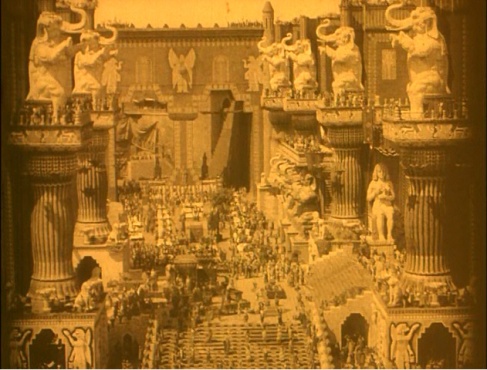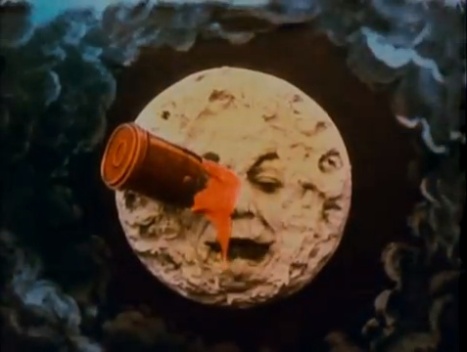
Wonder of the world. A scene of celebration in Intolerance‘s Babylon, featuring what must be one of the most remarkable sets ever constructed. No matte paintings here; all those little specks that look like people–yeah, those are actual people.
By the middle of the nineteen-teens, there was no bigger director in Hollywood than D.W. Griffith, and with Intolerance (1916) he went waaaaaaaaaaay out of his way to show that to everyone. Intolerance is a massive epic that weaves together four stories: one set in the present, another in the last days of Babylon, a third about conflict between Catholics and Huguenots in 16th century France, and (because Griffith certainly isn’t lacking in ambition) the life of Jesus of Nazareth. As Griffith jumps between the stories, he attempts to draw parallels meant to warn against the dangers of intolerance towards the beliefs of others. That certainly sounds like a noble idea, but the film came on the heels of his smash hit The Birth of a Nation, for which Griffith was (very rightly) accused of tremendous racism against black Americans. Whether this film was meant as penance is unclear. What is clear is that Intolerance was far and away the most expensive movie made to that point, and you see every dollar on the screen. (198 min.) Continue reading
